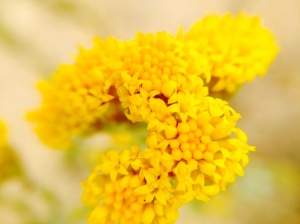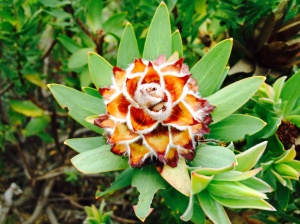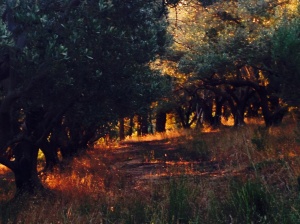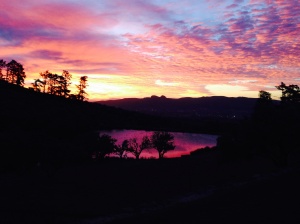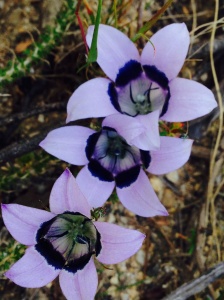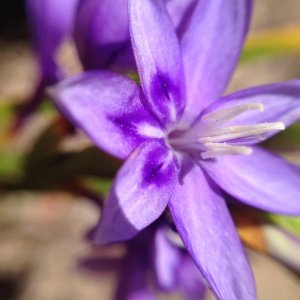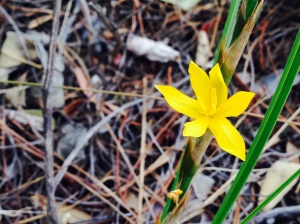Christmas Fynbos
Travel at Christmas is always fraught with risk. We left for a short trip to Ireland to spend the weekend before Christmas with a very dear friend, celebrating his 50th birthday. Thereby infuriating a whole series of family members, who believed that if we were in Ireland that close to Christmas, we should see them, not friends. Sorry. We then braved a lot of stormy flooding roads and wild bouncing skies, along with a Heathrow made worse than ever by the despairing passengers whose flights were cancelled two days before Christmas. Our plane, thank goodness, slipped through the weather and flung itself southwards and even managed to land in Cape Town without crashing, unlike another flight at O R Tambo in Johannesburg which walloped its wing by crashing into a building on the ground causing a mighty row between air traffic control and the British Airways pilot. You can imagine. No-one got hurt.
We arrived home on the 24th, back to the farm, the dogs and our gorgeous friends who came for Christmas. The fabulous David in Paarl did all the catering for us, so we had a wonderful self-indulgent break. Hubert sat beside me at dinner and explained that he doesn’t really love this blog because it’s too academic for him. He’s one of the cleverest people I know, so I think that, as a friend who lives most of the year far away, he’d rather more gossip and fewer flowers. Those last two paragraphs were for you, Hubert.
Meanwhile out on the mountain the dogs and I have been running regularly and loving it. Summer runs take in lots of water breaks. You hear of big dogs dehydrating so I’m careful about that and make sure the dogs are always in sight so that I can spot if anyone gets distressed.
Lots of things enjoy the summer weather and the Christmas collection includes a snake nearly trodden on by Noella, who was remarkably calm about it. Also a red lipped tortoise, charming creatures and we see them quite often. This morning a scorpion ran across our path, minding his own business. I love seeing these things, but it’s another good reason to keep the dogs in sight, just in case they get too inquisitive about something nasty.
The flowers may not be profuse, but there are still plenty of things out there to interest us. Some choose to flower in the hottest driest of weather, like the helichrysum that covers the mountain.
There are plenty of Pelargoniums that don’t mind the heat and choose the hottest months for their flowering. I’ve taken a lesson from the mountain and planted lots more of these in the garden.
I have only seen these orange spikes in one particularly damp spot on the road that leads up to the pine forest. They are known as wild dagga and the dried leaves traditionally have been used medicinally but are not a narcotic or tobacco substitute, contrary to what some of the local residents have told me.
I love this Selago corymbosa which flowers only in the dry months on it’s long softly spiking stems.
There are 35 fynbos lobelias and they are really stunning, especially in close up. I’m going to suggest that this one is Lobelia pinifolia because many of them have hairless flowers while this one is quite clearly hairy.
This is known as the blue pea and is most likely Psoralea restioloides, choosing to flower late in its season near the stream that marks our boundary with the nature reserve at the top of the farm.
This, oddly, is known as the Christmasberry, although it flowers at Christmas and the spectacular red berries appear in the autumn. It is a common shrub, with a distribution along the coasts and a good way inland from Namaqualand on the West Coast of South Africa all the way to KwaZulu-Natal on the Eastern Coast. Perhaps among all those different habitats there is one in which the berries appear at Christmas.
I love these protea cones though I can’t remember which member of the protea family this shrub belongs to.
This time of year brings the most magnificent sunsets and with friends staying we often take a sunset walk with the dogs. We’ve had tremendous winds this spring and suddenly over Christmas they’ve dropped and the weather has been perfect, sunny but not too hot. The air is amazing, a light breeze, slight damp dew falling as the sun goes down. Fewer flowers perhaps but the valley below us is a theatre of glorious changing light.


